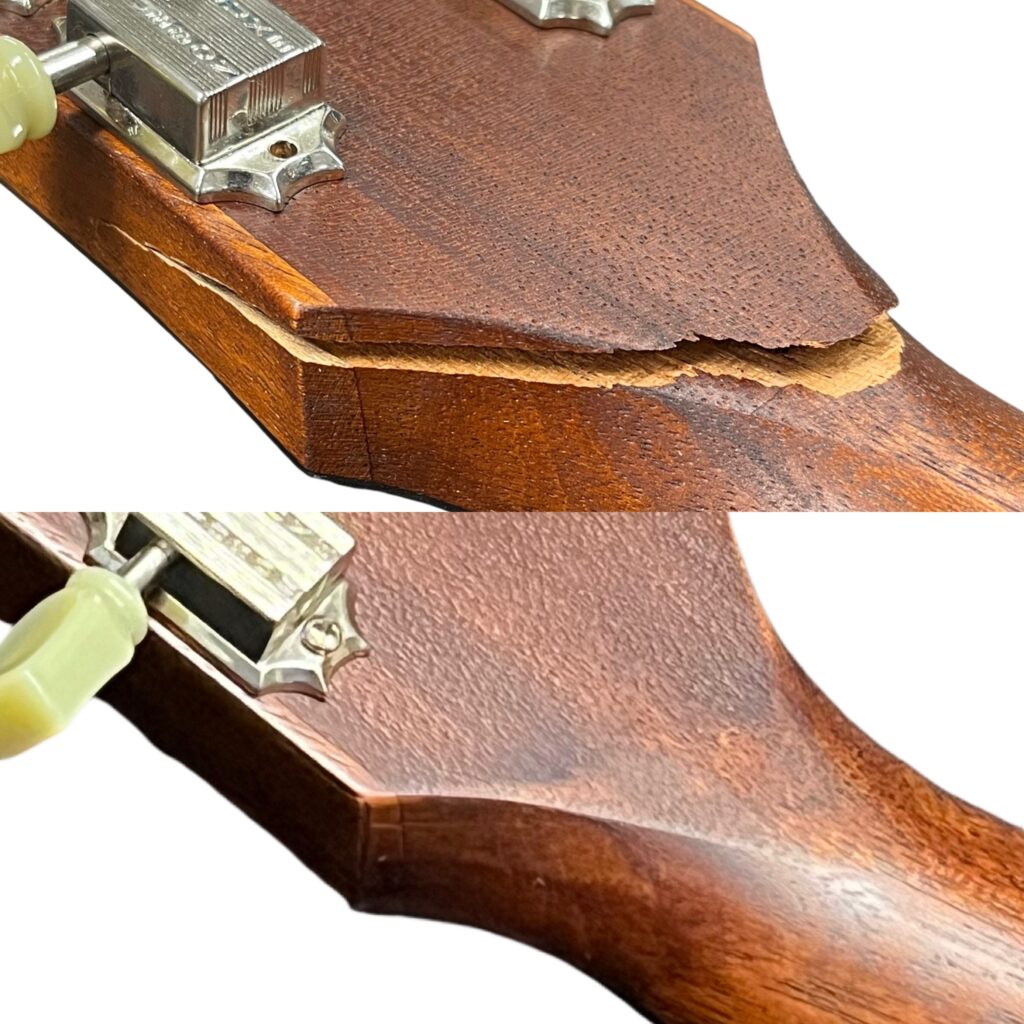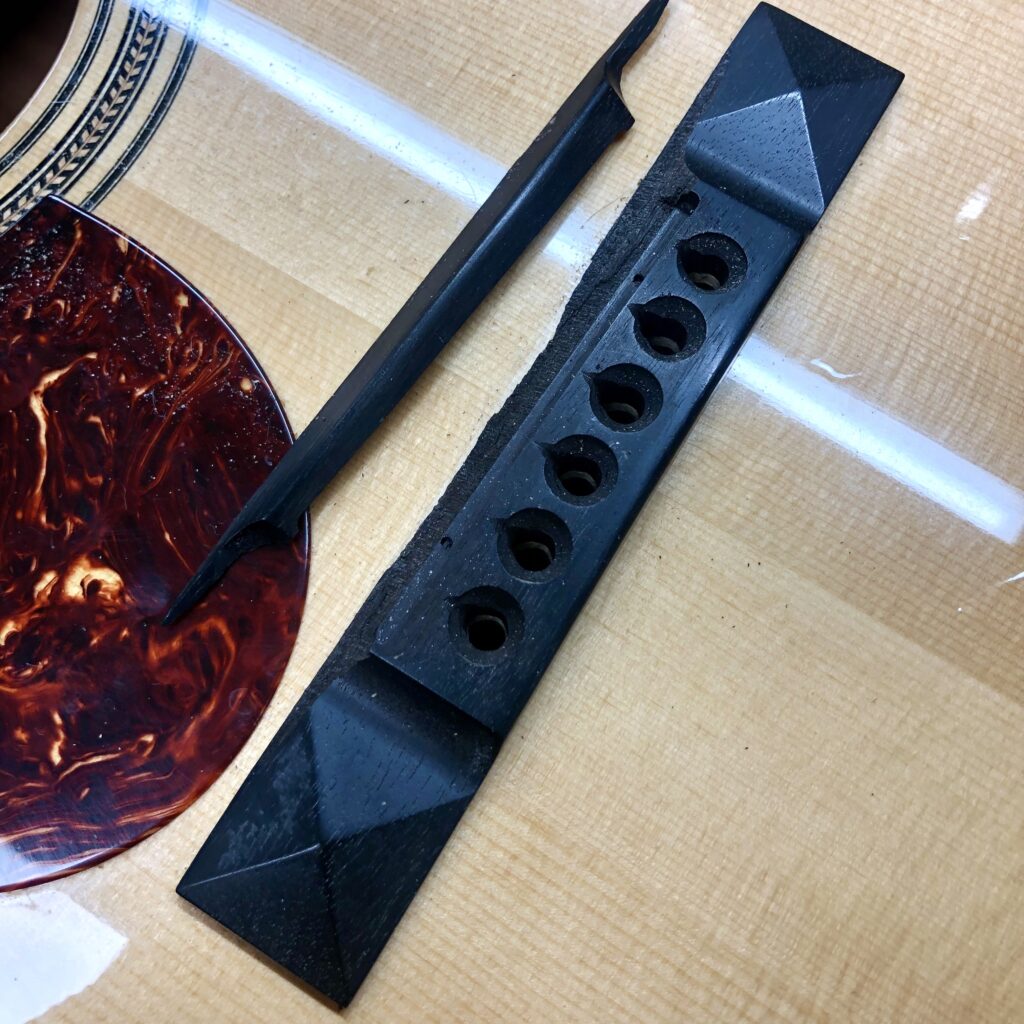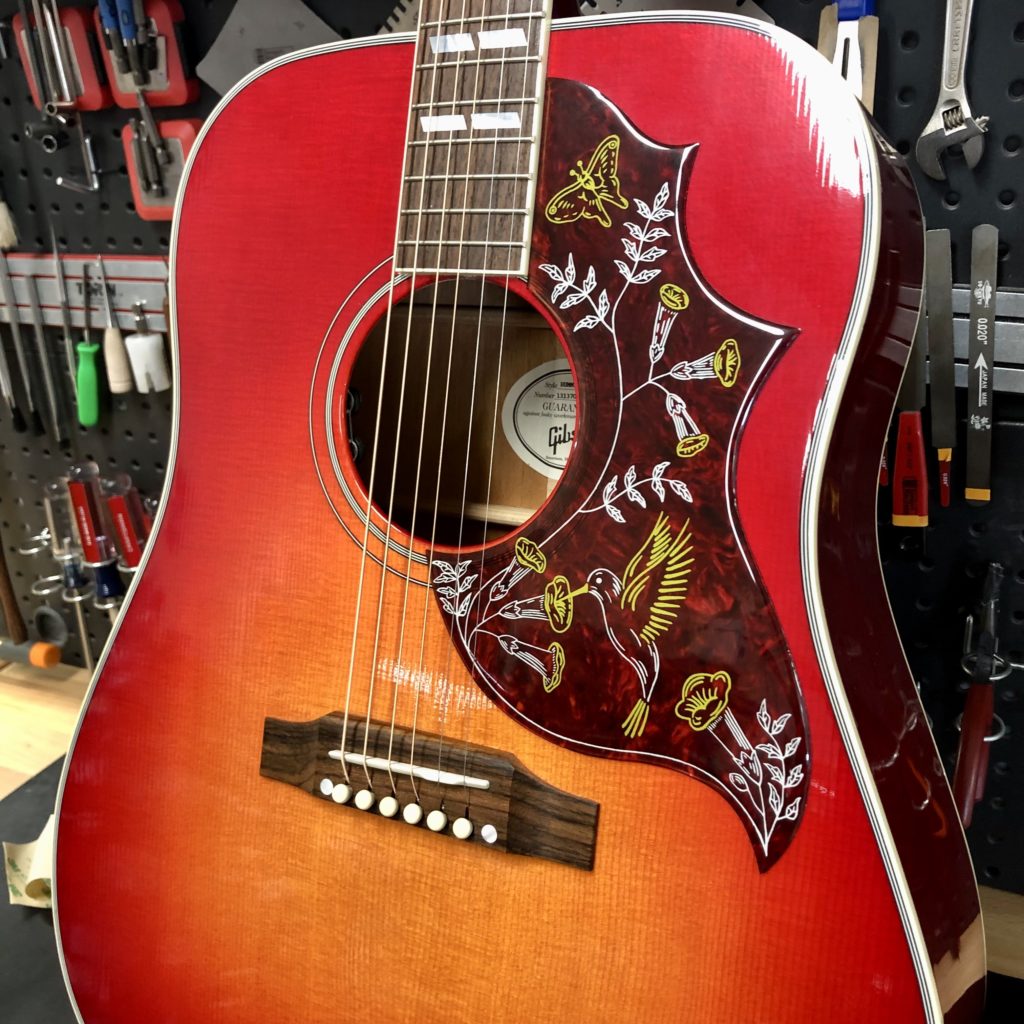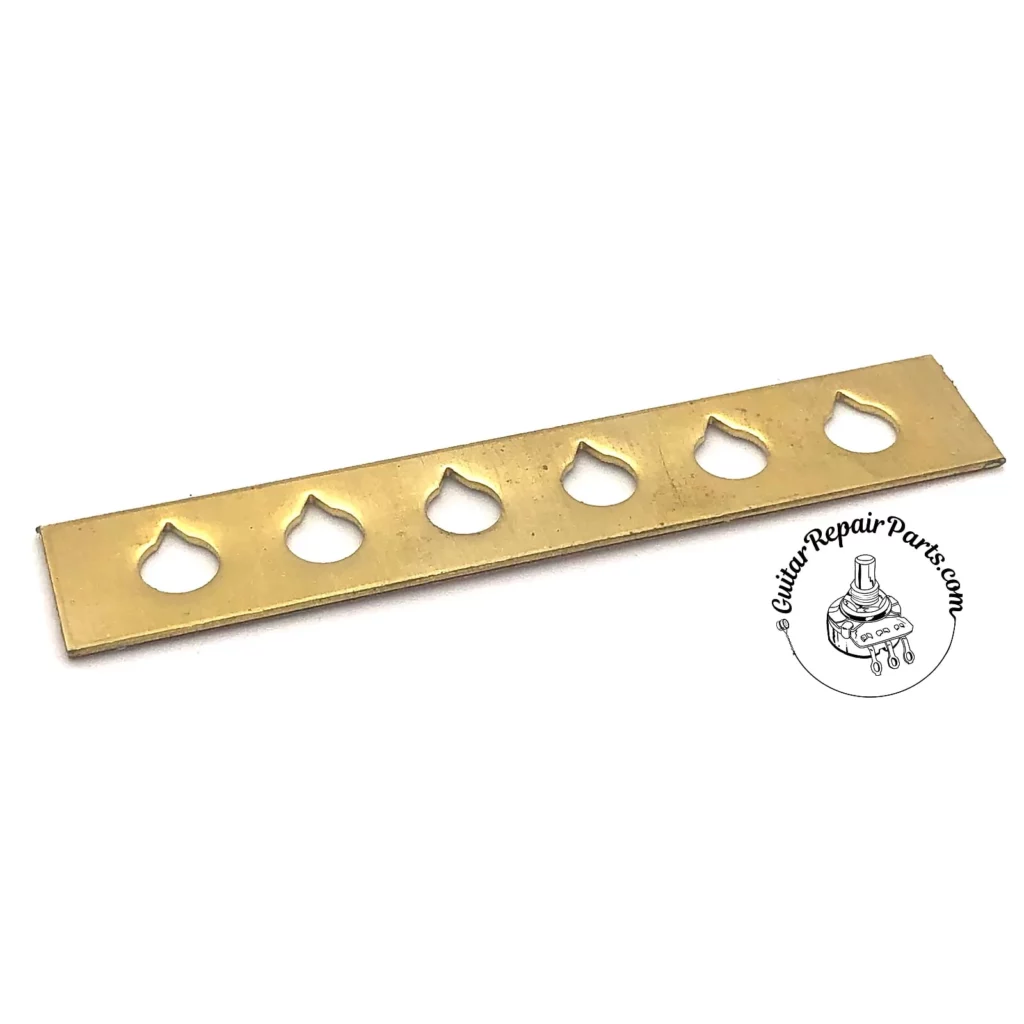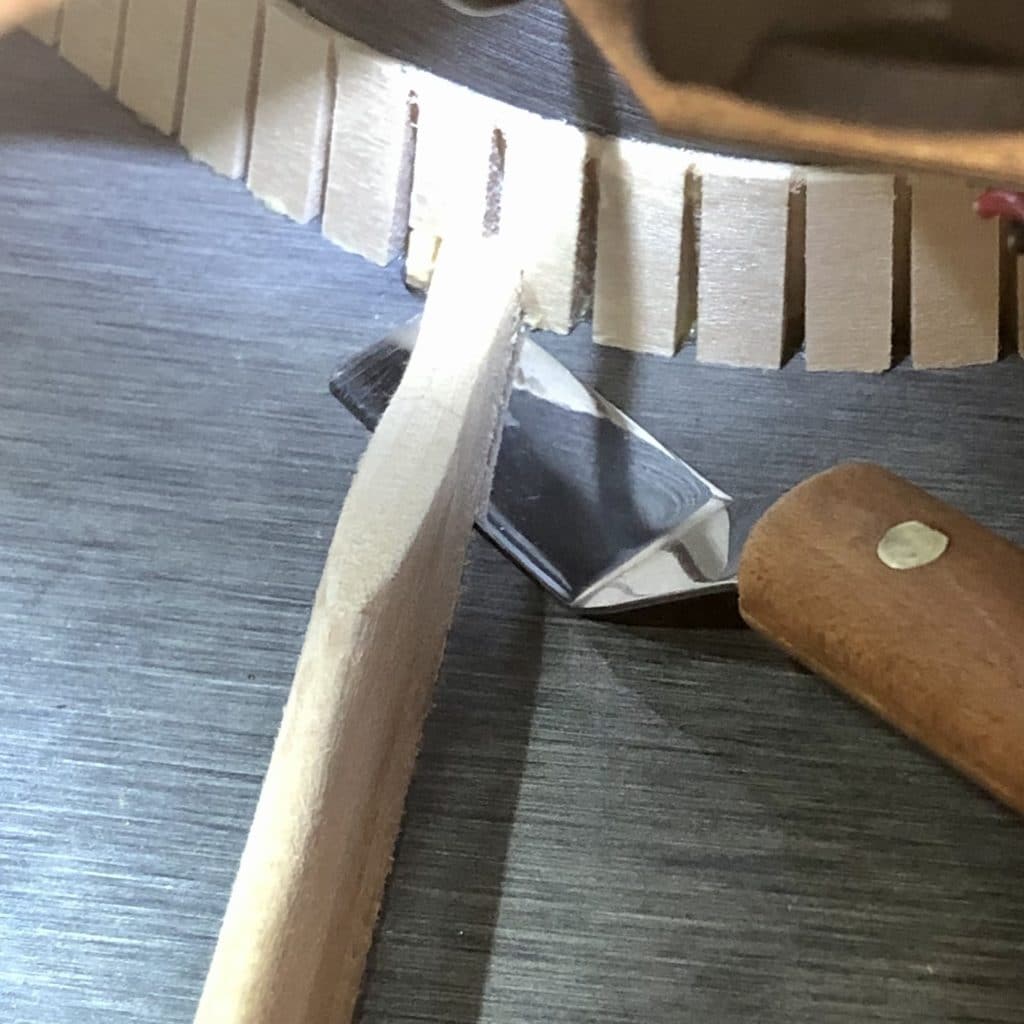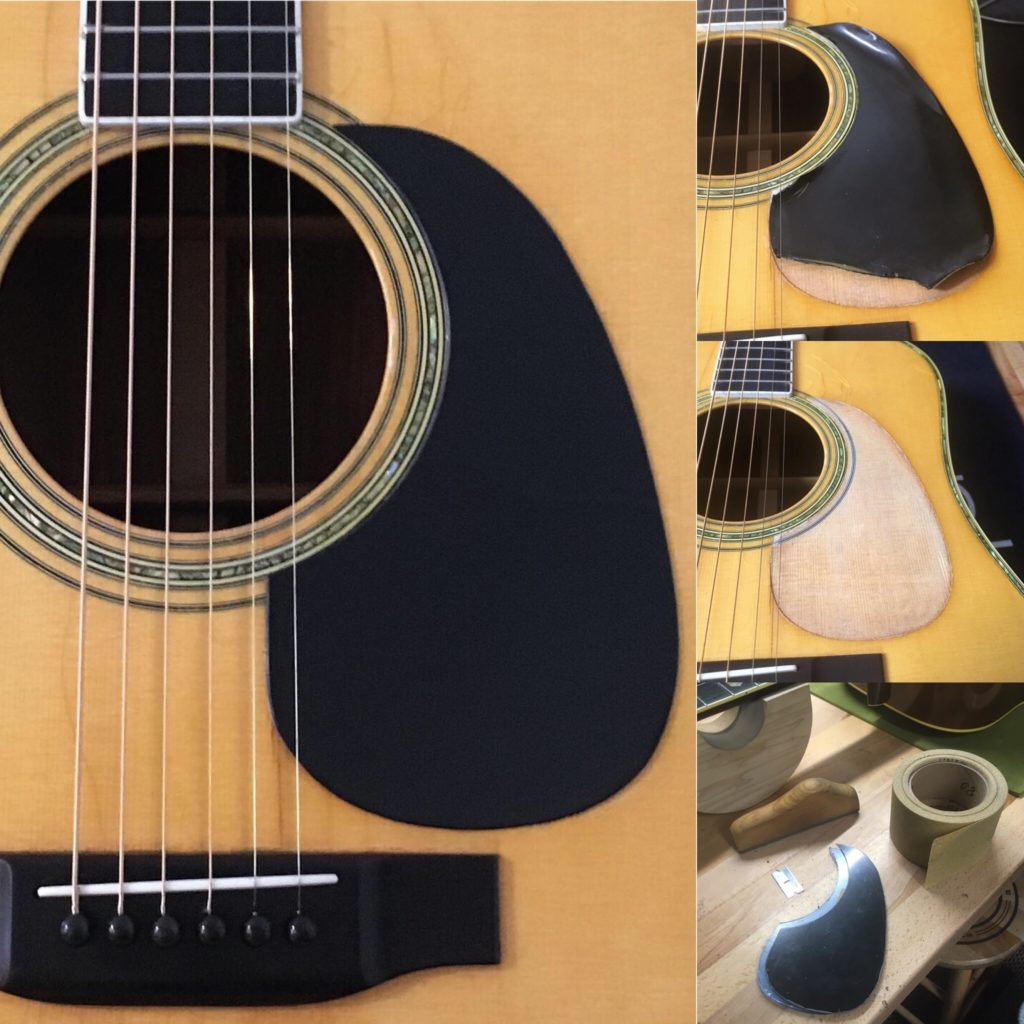Gibson Headstock Repair
This 2005 Gibson Les Paul Studio guitar came into the shop suffering from a broken, or cracked, headstock. Though it can happen to any guitar, this type of repair is most commonly associated with Gibson instruments. Fortunately, we were able to get it repaired for the client, including gluing the crack and performing cosmetic touchup.
Gibson Headstock Repair Read More »

